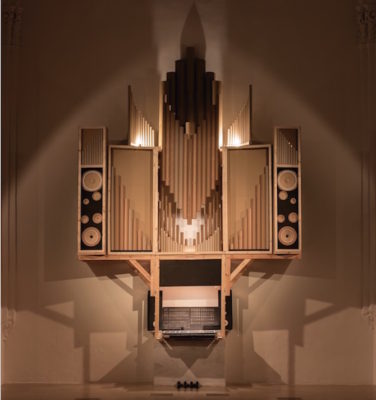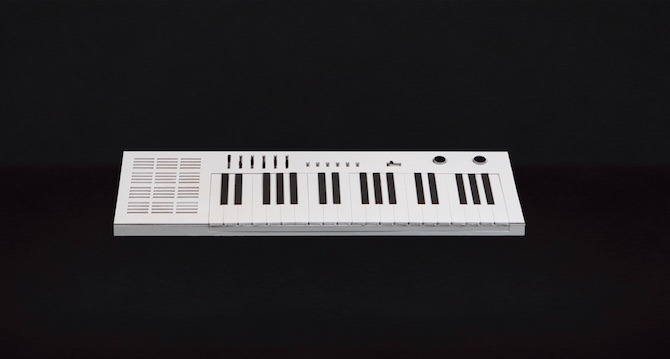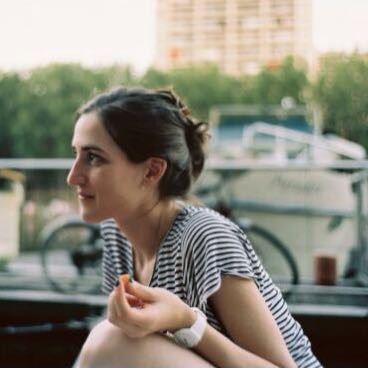Search
To search for an exact match, type the word or phrase you want in quotation marks.
A*DESK has been offering since 2002 contents about criticism and contemporary art. A*DESK has become consolidated thanks to all those who have believed in the project, all those who have followed us, debating, participating and collaborating. Many people have collaborated with A*DESK, and continue to do so. Their efforts, knowledge and belief in the project are what make it grow internationally. At A*DESK we have also generated work for over one hundred professionals in culture, from small collaborations with reviews and classes, to more prolonged and intense collaborations.
At A*DESK we believe in the need for free and universal access to culture and knowledge. We want to carry on being independent, remaining open to more ideas and opinions. If you believe in A*DESK, we need your backing to be able to continue. You can now participate in the project by supporting it. You can choose how much you want to contribute to the project.
You can decide how much you want to bring to the project.

Eduardo Balanza is from Murcia, but he has travelled around half the world. Also known as Radiocobra Supersound, he is the founder of Frente Electrónico Unido: for now, a periodical publication, and in future many other things too. Visual, sound, analogical and temporary elements are interwoven in his oeuvre with their opposites. We find ourselves in Berlin, where he is temporarily collaborating with a theatre company before leaving for Norway to prepare his new project.
Over the course of your artistic career you have often worked on themes related to music that are somehow connected to silence. I am referring to the musical instruments made of cardboard that you have rendered inoperative, silencing them.
These musical instruments may not work but they do represent. I have a weakness for prototypes, which is why I use paper and cardboard that are often used in prototypes, like foam or clay. My relationship with paper derives from having made stage sets and mock-ups, and also from having lived in Malaysia, where ritual burnings are performed to make things reach those who are now in the other world — from prayers to video cameras or money. I am very interested in this transformative power of the prototype, in the distance between what is valuable and what isn’t. The cardboard representations of classical models allow me to approach subsequent mass-produced models.
The idea of musical instruments made of cardboard is precisely this. I’m not a musician but, like Pasolini, I am guided by thwarted passions. I come from a family in which there were pianists; the piano was always close by. As a child, I wanted to be a pianist, yet for different reasons this wasn’t to be. The impossibility of devoting myself to the piano was frustrating and later on led me to pursue something else that I was also very keen on. Leaving to one side the oblique ideas of a child who would perhaps have tried his hand at the keys with mediocre or even poor results, circumstances led me to become a visual artist while preserving my interest in music as a listener, a collector or a reader, without making music, without being a musician. To a certain extent, the cardboard instruments keep this secret, this almost fetishistic frustration with the object. To make an instrument is somehow to represent music.
But you’ve made many more electronic instruments than pianos.
Yes, I was sort of obsessed with Robert Moog, the engineer who worked with Walter Carlos (later Wendy Carlos) and developed several models of synthesiser. Carlos composed and played, and Moog enhanced the developments and worked on the shortcomings he discovered in the instrument. She composed for the soundtracks of Tron and of The Clockwork Orange, and made that wonderful speech on Bach … Over the past few years I have focused on representing the most commercial models, such as the Korg, small Casiotones, etc.
But for my last exhibition, Maestros I already made pianos and organs, as a way of condensing a slightly dark frustration. Some of my pianos are connected with an absurd investigation I carried out on the colour black, working from keys and technology — some pianos are shiny, others are matt or have satin finishes. It is also related to musical notes, to Satie and Debussy, to a blossoming of French music in opposition to German music, all through the piano as an elementary instrument. Responses to the great symphonic strongholds of Beethoven and the immense and infinite spaces of Wagner’s operas. I find this idea of resistance through music that subsequently leads to the wars, to Shostakovich’s Leningradfascinating.
Speaking of wars precisely, I remember the cardboard tank you made for your 2009 project entitled Mute War/We Take Berlin
Yes, I made the mute or silent war in Berlin with my collaborator Stephan Bosse. I took the model of the T34, the tank in which the Russians entered the city, the most versatile of the tanks that took part in World War Two (it proved too much for the Germans). Its mere presence represented a real threat. We made the tank out of cardboard and moved it all around the city, taking photos. With no armies, no noise at all, the tank only represented the threat in a phantasmagoric fashion. War can be hyper-loud and devoid of music. Barbarism takes the place of culture, but the silent tank represented the latent threat. As Baudrillard explained in The Transparency of Evil, everything is there but it never happens.
Silence has this sinister edge to it, that can occasionally strengthen some of its aspects. You use it as a resource in certain works such as Baila para mí (Dance for me) or Arqueología de las pistas de baile (Archaeology of the dance floors).
Silence is Side A of sound. It’s a loudspeaker. I use it a lot as a visual resource, a literary resource even, for emphasis. In this video work, bodily expression is decontextualised and reinforced by silence, outside of sound, bringing meaning to movement in dance.
In its turn, Arqueología de las pistas de baile examines spaces, clubs or discos that no longer exist. The work explored memory, the nostalgia that sometimes surfaces in my oeuvre for the analogical, for the golden age of Berlin techno of the nineties, a time when Berlin was teeming with clubs. This period was of course idolised, but it did have a moment of glory. When I arrived in the city in the first decade of the twenty-first century, all this was already coming to an end. I went out to look for the clubs that appear in Temporary Spaces, Martin Eberle’s photography book, and I saw that many had disappeared: one is now a shop selling sofas; another one, Cookies, which I made in cardboard for an exhibition, has moved from place to place. I like making reconstructions of what is no longer there, like a fabrication of memory, a sort of fetish object, analogical in form, with neither props nor music — dead. Absolute silence. Absence.
You’re now working on an instrument that will make sounds.
I’ve gone back to giving the instrument a voice; I’m coming out of my personal confinement from music after having represented it, through weapons, with cardboard; after having read a lot, having carried out musical performances and radio sessions. Next comes building an organ, that I consider a visually aggressive tool of great plasticity that is very impressive in a church. But it is not a religious instrument — the Greeks already had hydraulic organs, the Romans took the organ to the circus, the Church incorporates it later and it is during the Baroque that it reaches its peak.
Organs, like engineering, follow one path and pianos follow another. Just like synthesisers. I find these diverging paths taken by such familiar instruments intriguing. I approached the organ in the context of this recent solo exhibition in Murcia, home to one of the largest organs in Spain, a Merklin-Schütz built in the late nineteenth century after the fire that wrecked the cathedral. My great-great-grandfather was involved in the inauguration of the new organ; he had written a treatise on the pedal organ and had carried out another piece of research on the region’s folkloric music. I invited musicians to collaborate on the exhibition, and we remixed classical and electronic music live. That’s when I saw the need to build a slightly different organ, one that had a voice of its own.

Different in what sense?
The organ I want to build won’t have a tonal chart; it’ll be digital and will have loudspeakers. I’m going to develop the interior part of the organ, the brain, the voice, but with a resistance chart that is analogical, political, spiritual and feminist. I’m going to build it in Norway, in Skien, for two reasons: the first is that they have a very modern, computerised organ that I can take as a model; the other is that Norway is on the front line of climate change despite not making the headlines, and her rivers, trees, glaciers and whales are all threatened. This organ will be a way of approaching the silence of the whales, the forests, etc. These and others will be the sounds represented by this organ, designed to offer a degree of resilience, to provide a voice to those without one, to what is disappearing before our eyes.
In other words, this organ does not only reconcile you to music but it also enables you to address political topics of today.
I am somehow closing the circle of my family’s relationship with pianos and organs. Above all, this organ is intended to be an instrument of resistance that embraces many of the themes that concern and interest me at present.

Glòria Guso is an art historian and a researcher in the social sciences. She was born in the periphery of Barcelona but lives in Paris and her second home is Germany. For her PhD thesis in sociology she studies the international mobility of the visual arts professionals. She writes, coordinates, edits, documents and criticizes.
"A desk is a dangerous place from which to watch the world" (John Le Carré)